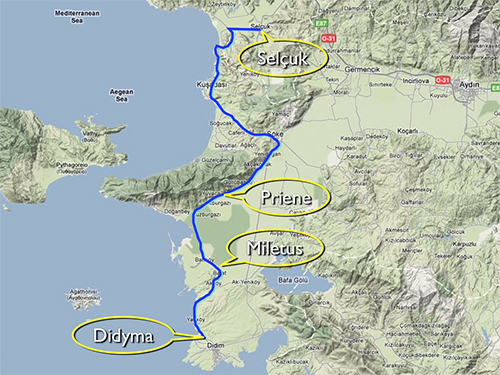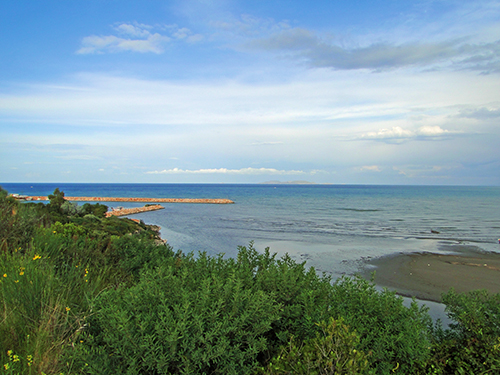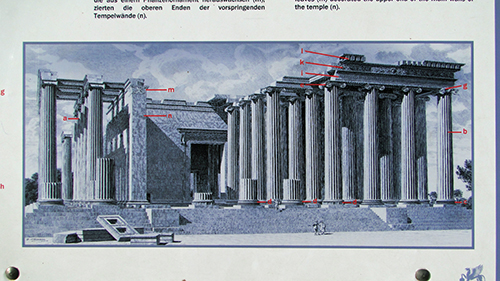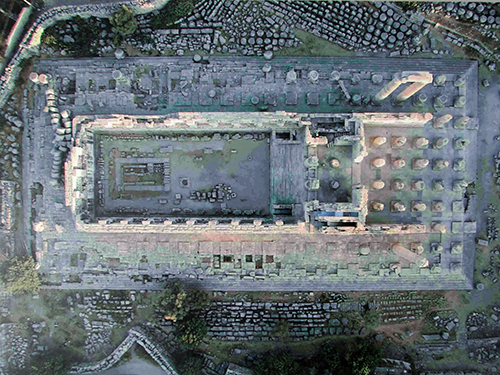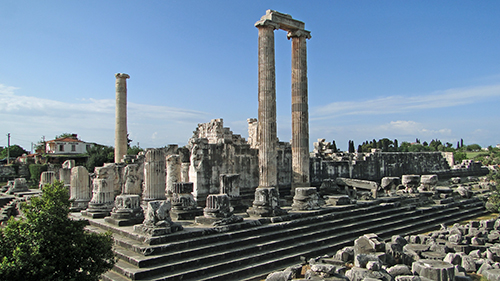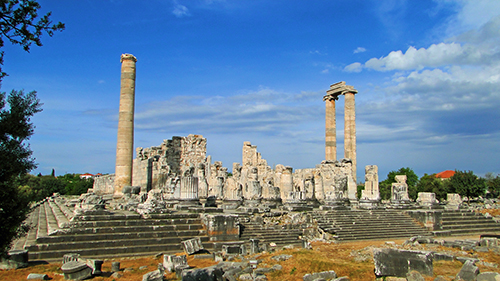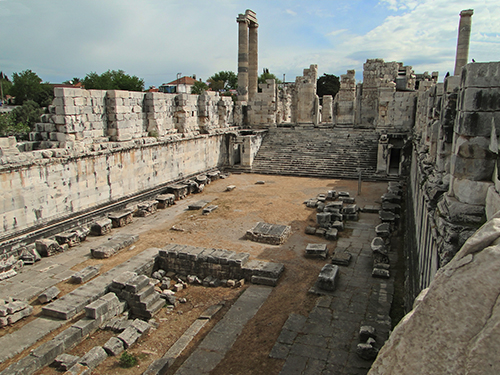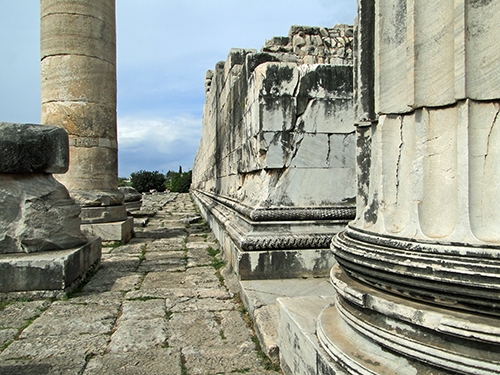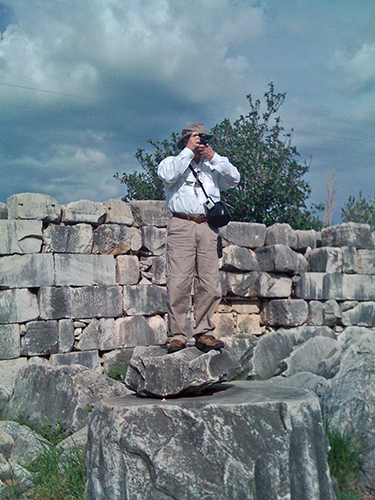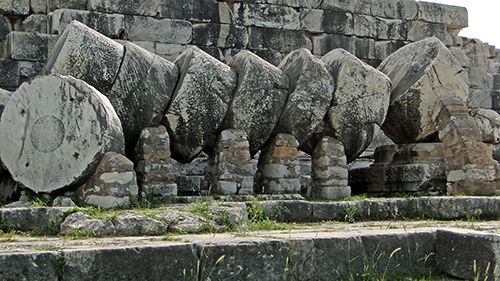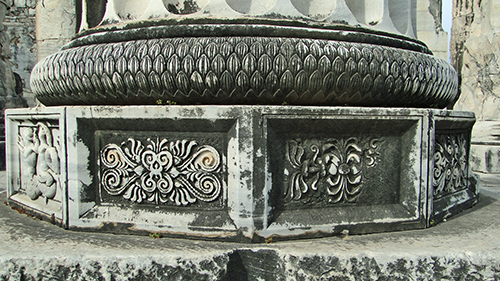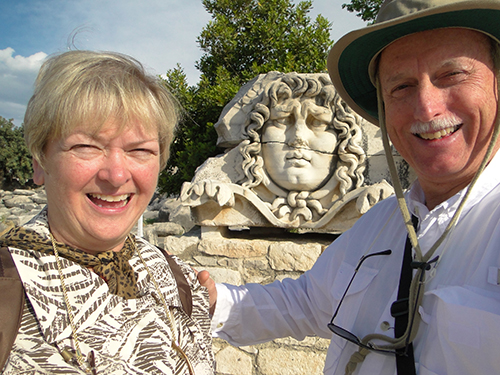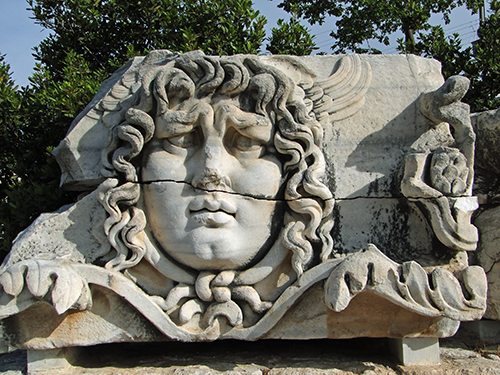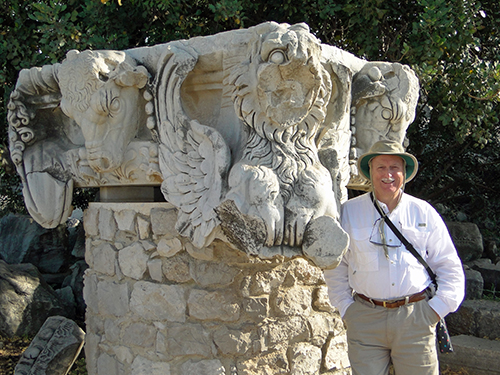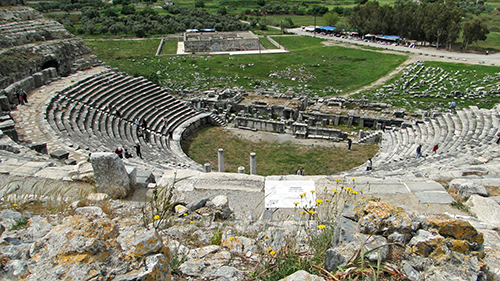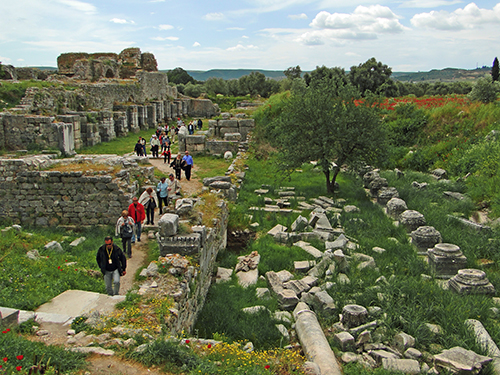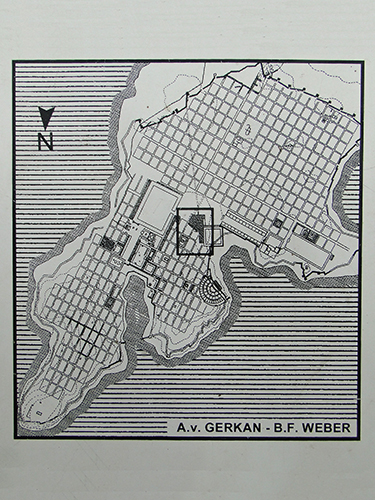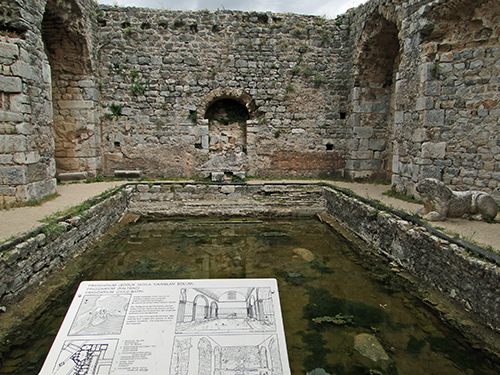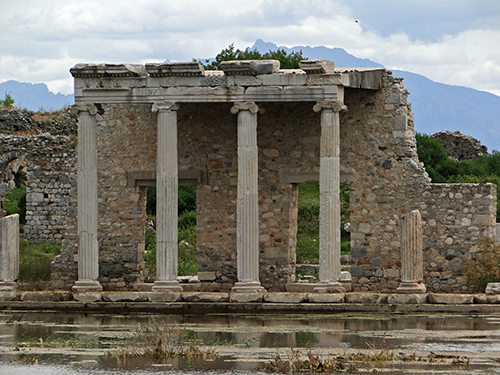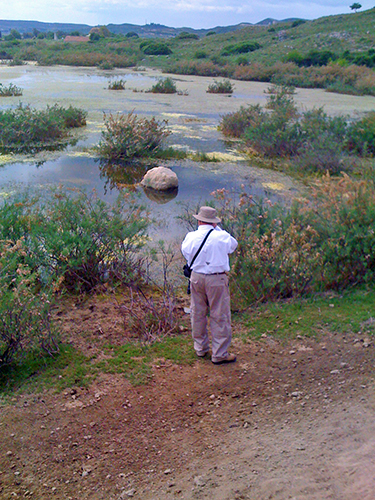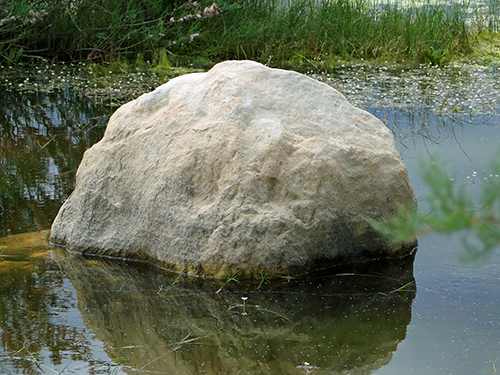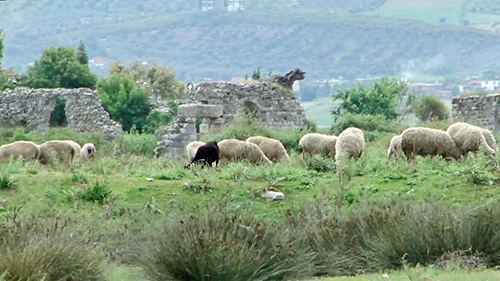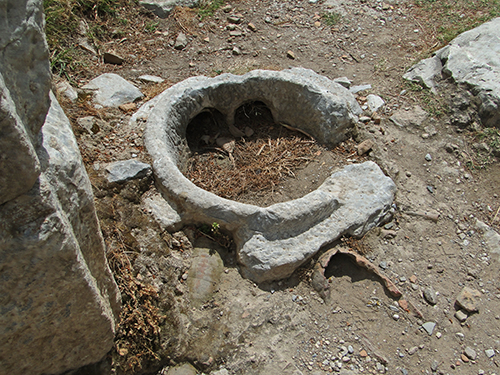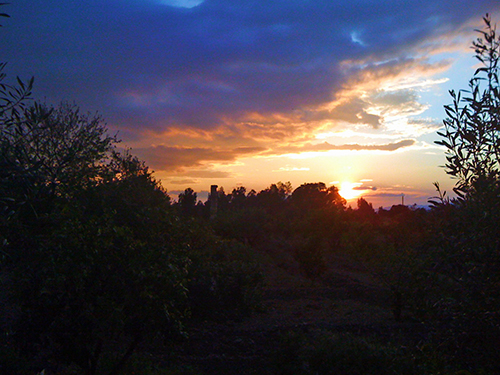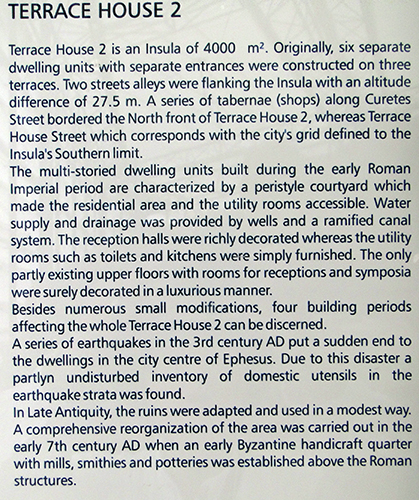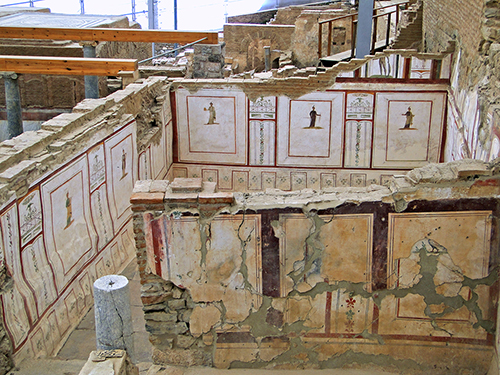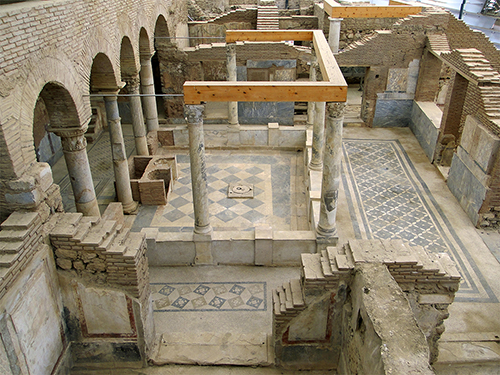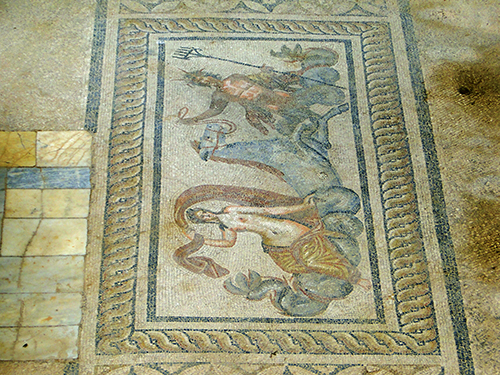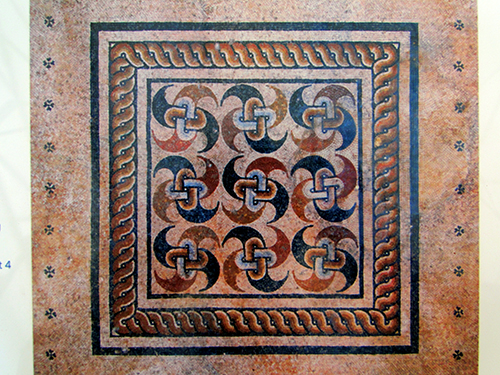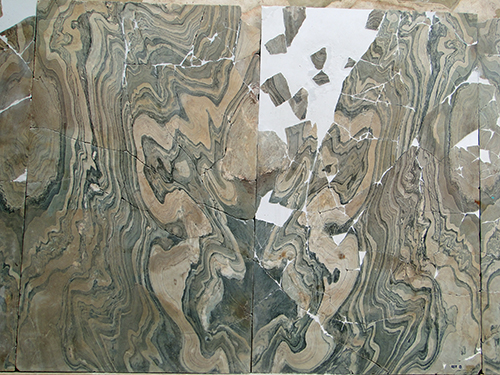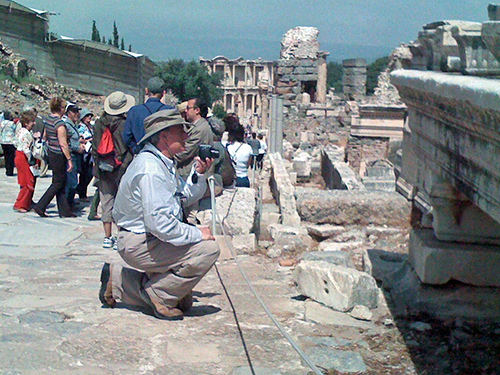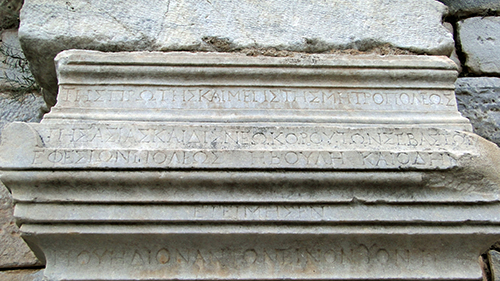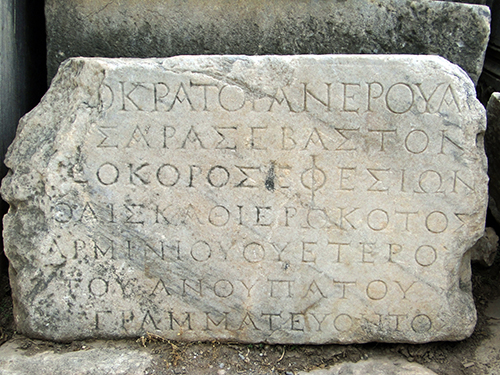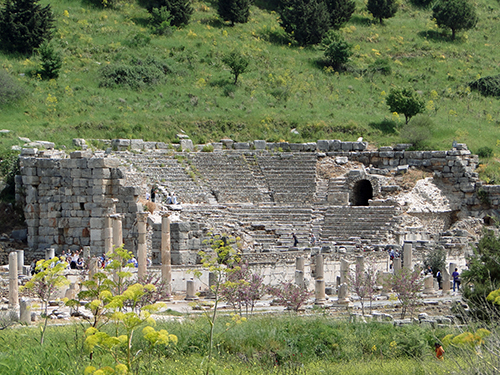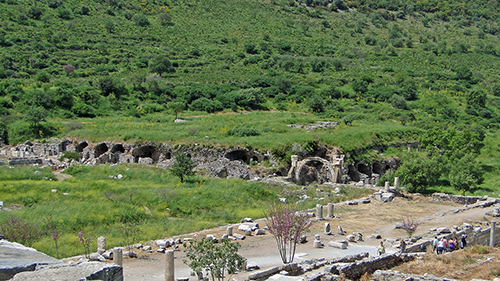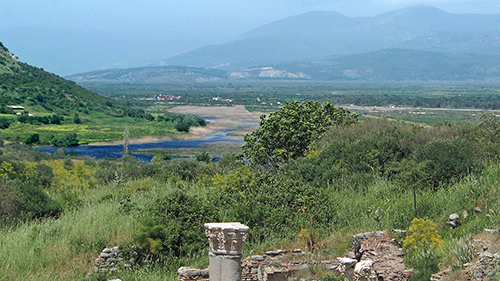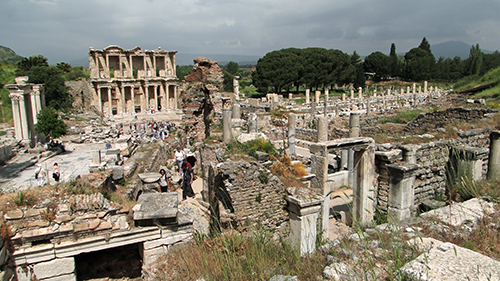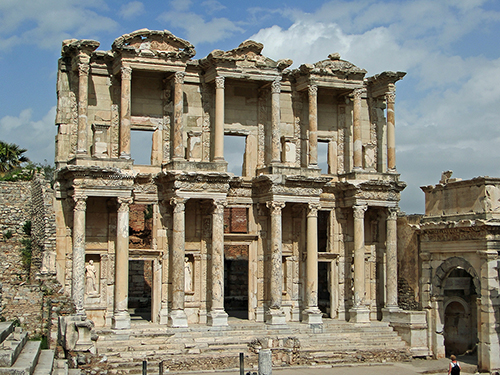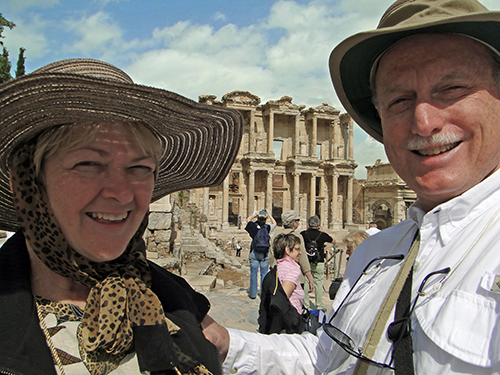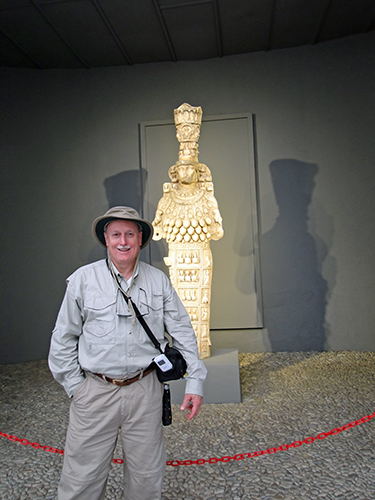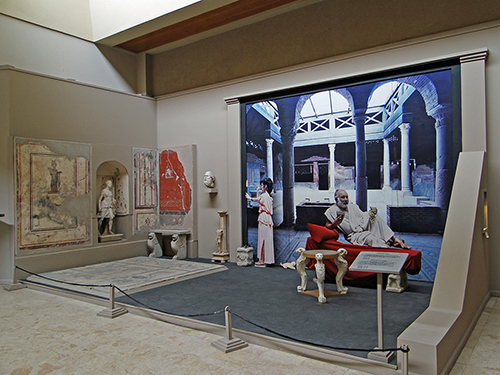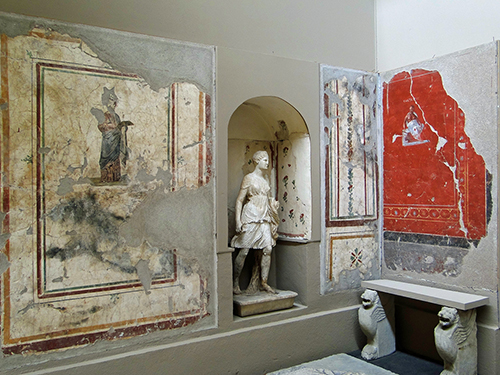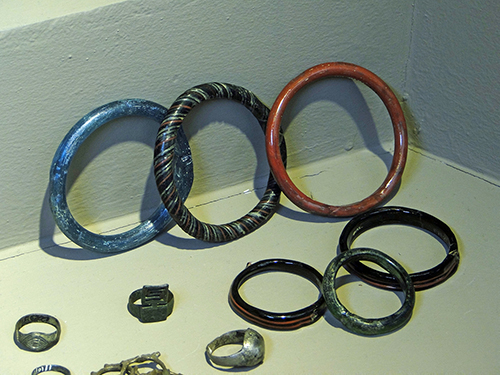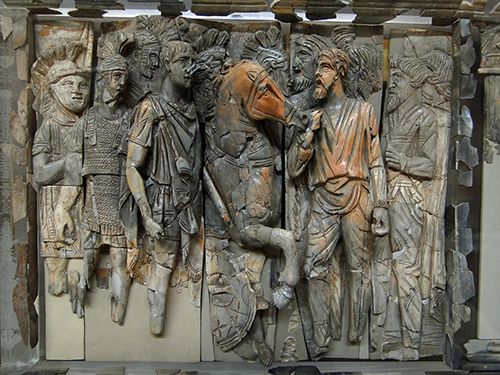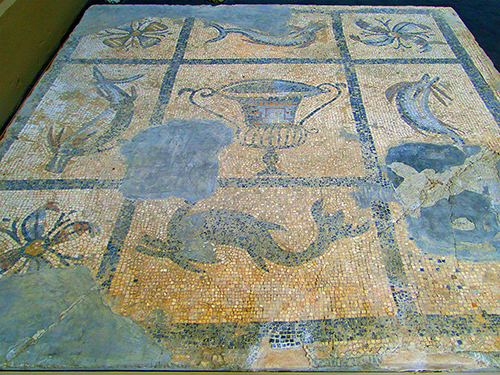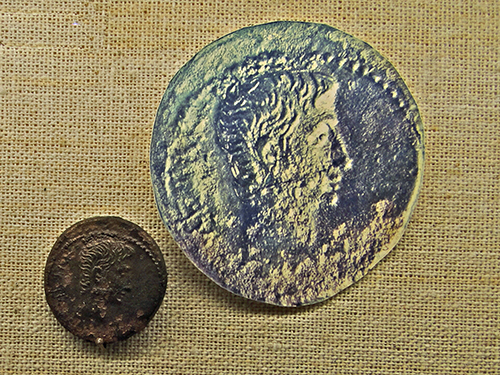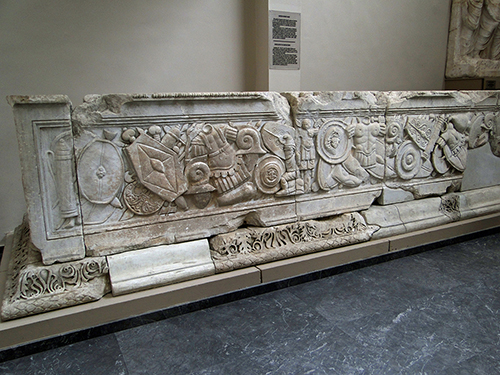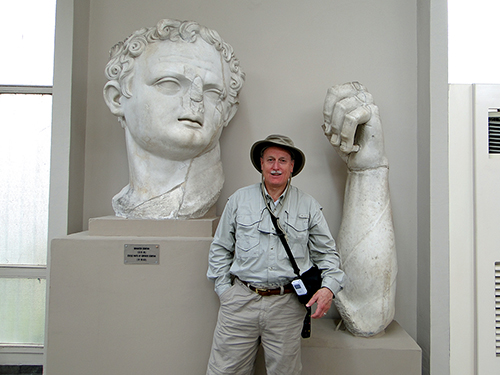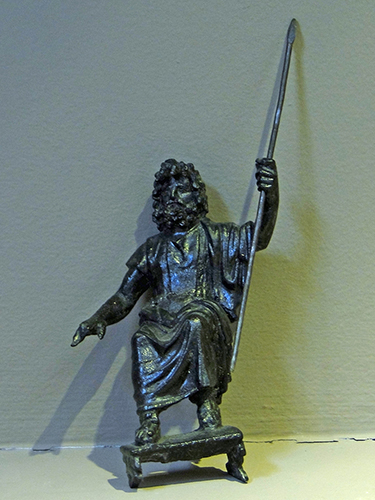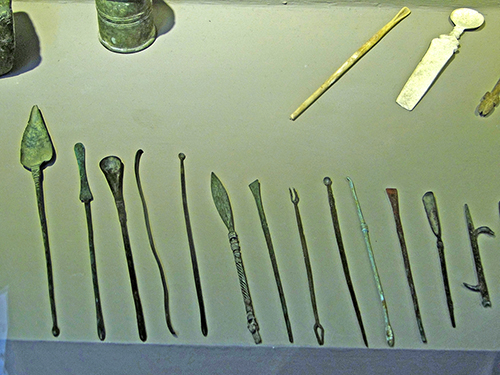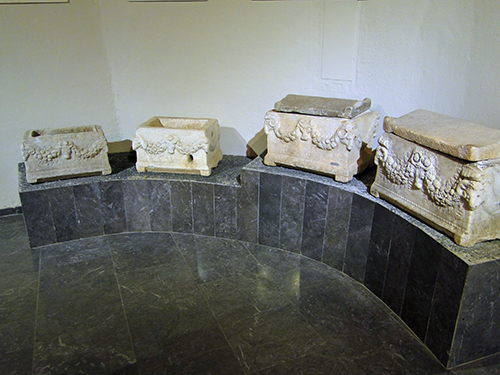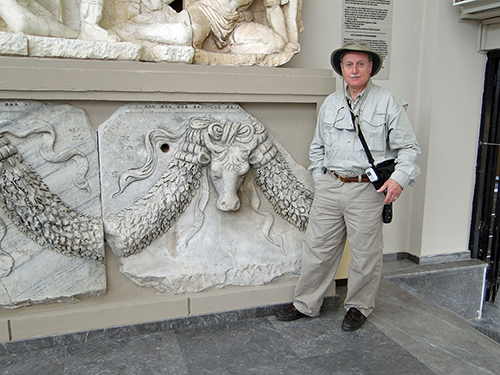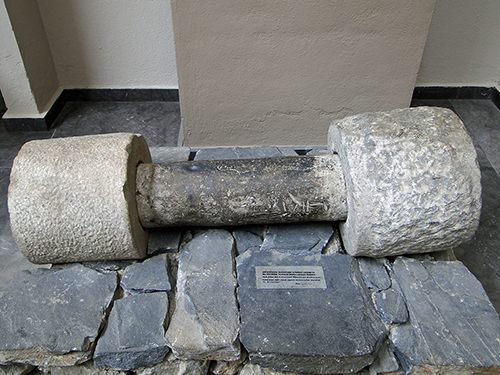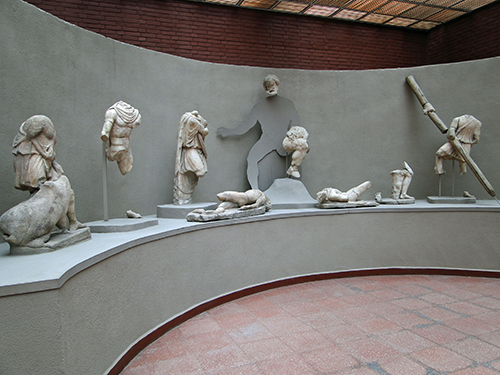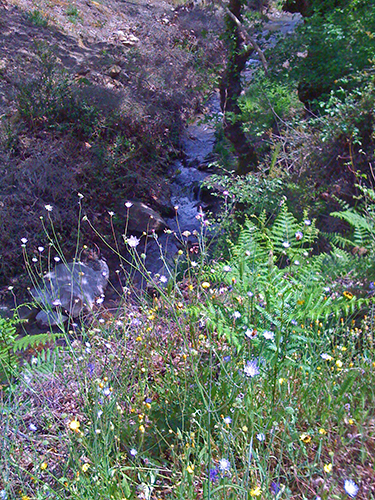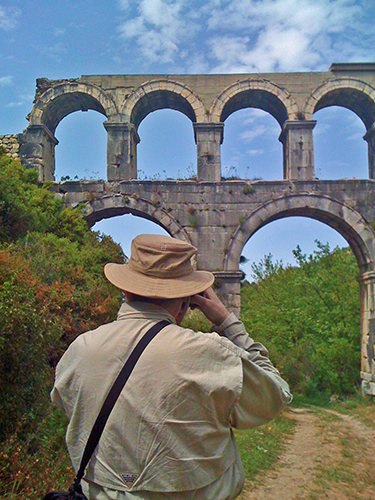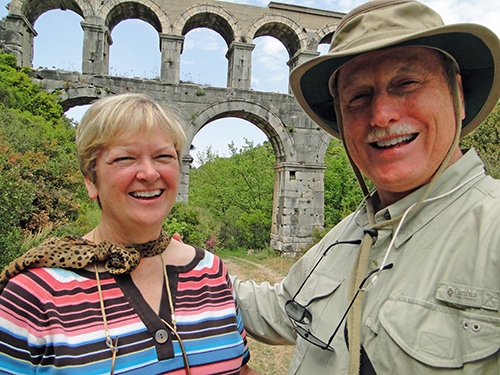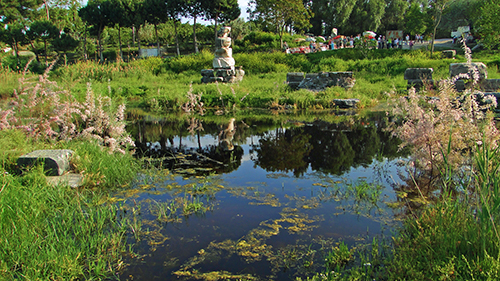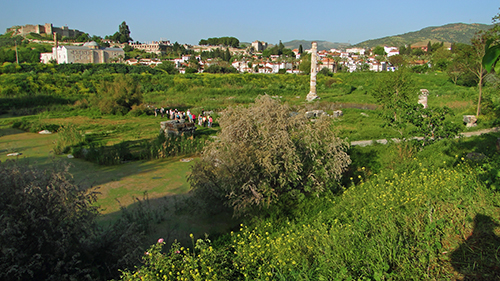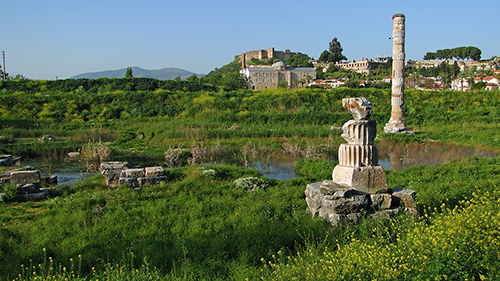We woke up to thunder and lightening this morning! Oh, I do hope the sun will pop out later. We get ready to go. Jerry called our friend, John Crider, and finally got to talk to him; found out Lauren had a great time at her high school senior prom, which was answered prayer, since for a long time she did not have a date to the event. Also, Lindsey was named Sophomore English Student of the Year at Samford.
Didyma. Leaving Selçuk for our long haul daytrip down to Didyma on the coast, we stopped by a little market to get some orange juice, two apples, two oranges, etc. for breakfast/lunch. As we drove along, the sun did start to come out! The drive was very nice whenever we came along the Aegean Sea. The shot below was taken on the map where you see the highway first comes out to the coastline past Miletus.
We finally arrived at Didyma. The two main sights to see are the huge but unfinished Apollo temple and the colossal Medusa head that is at the site. Spent a good bit of time there. The Apollo temple, had the project ever been completed, would have been the largest in the world, dwarfing anything ever attempted. Here is an artist’s rendition of the temple in construction.
The shot below is an aerial from directly overhead. (No, Jerry did not climb somewhere to get this one!) The grand foyer entrance is on the right. The temple proper is in the middle, with the interior courtyard to the left.
The intricate carvings and detail on the base of the columns was stunning. These designs were not the same from base to base either.
Inscriptions indicate “reserved” seating in the temple compound area.
I was particularly happy to find the giant Medusa head, since I had seen this figure on so many brochures and other printed literature and advertisements.
Jerry thought this column capital was significant, as the carvings indicated the principle activity of sacrifice for this temple complex, especially the bull’s head with draped garland.
Miletus. We next retrace our steps and head back up to Milet, ancient Miletus. The city of Miletus is where the apostle Paul stopped on the return trip of the Third Missionary Journey in order to speak to the elders of the Ephesian congregation, whom he had called down to meet with him in Miletus (Acts 20:17–38).
Miletus Theater. We saw the Miletus theater again. The image below is the front of the theater, in which the middle portion, which would have been the back part of the stage, has been lost. The other two images provide perspective to show how large the theater is.
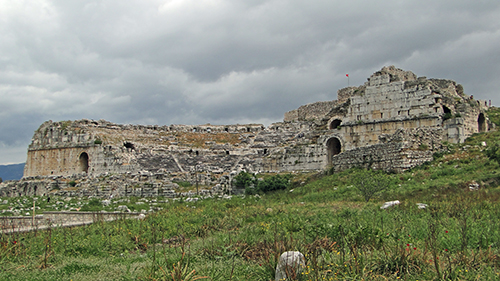
This time around we looked for and found the important inscription, “place for Jews and godfearers,” in the fifth row of the theater in the section to the right of the emperors seating. This inscription indicates that the Jewish population in Miletus was an integral part of the cultural and social fabric of this important Greco-Roman city.
Faustina Baths. We moved past the theater to the area to the west that we missed the first time around. There we were able to find the Faustina baths, which we had missed before.
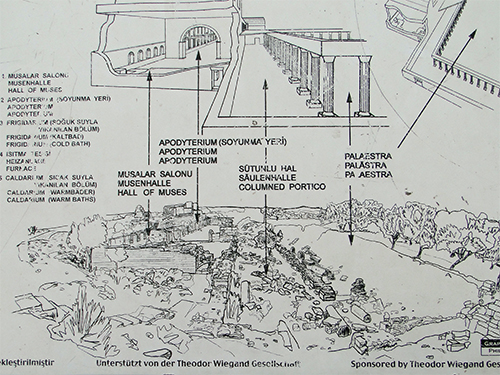
In particular, the caldarian, or hot bath area, is well-preserved. The original stone carvings of the god Meander and the lion are in the museum in Istanbul. The figures in the bathhouse are accurate reproductions.

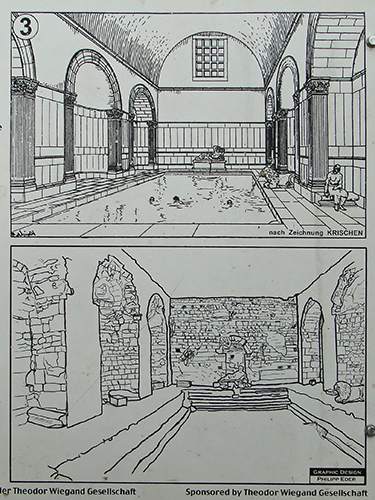
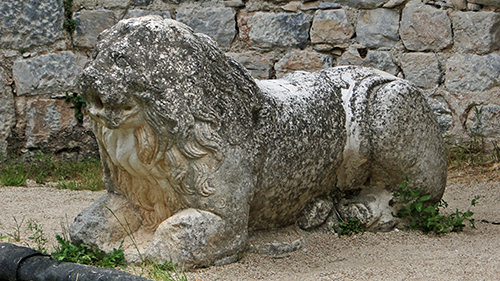
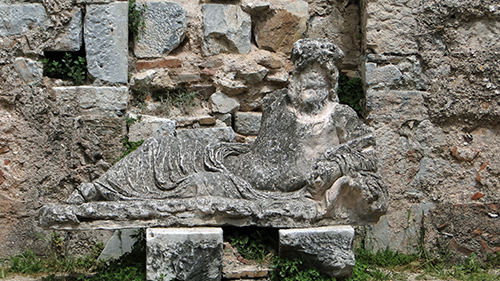
Harbor Market. We also surveyed the old market area adjacent to the harbor, the acreage of which is pretty much totally covered in shallow water these days. (Miletus, like Ephesus, had a significant silting problem for its harbor due to the slow-moving river.)
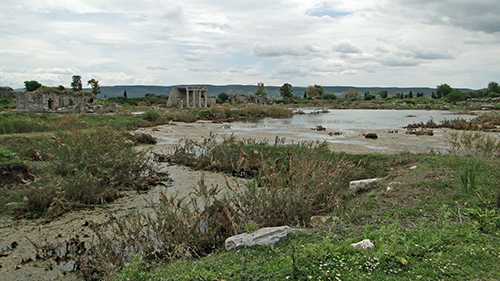
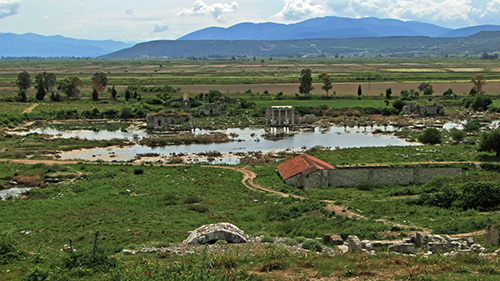
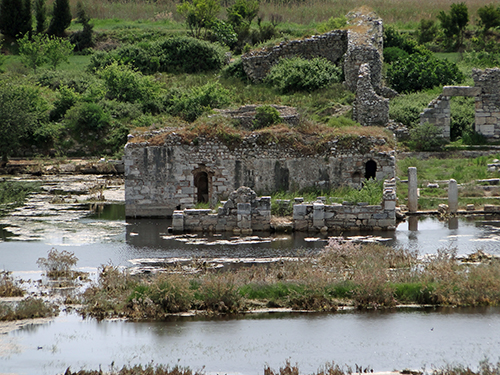
South Agora. The south agora (marketplace) was a significant part of the entire market area of Miletus, and is perhaps the largest ancient marketplace ever found. The warehouses connected to the south agora can be dated to the second century B.C., which means the apostle Paul would have seen them on his entry into the port of Miletus.
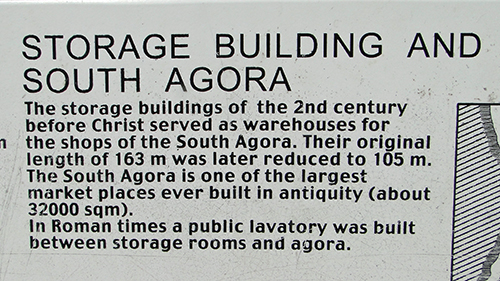


Miletus Synagogue. In this general market area is also the speculated location of the ancient synagogue in Miletus. This possible synagogue identification is the middle of the image below, not the ruins on top of the hill.

Miletus Harbor. After catching an overview of the market area and south agora, we next went looking for the old harbor, where Paul and company would have pulled in to port. We found the harbor area. As we walked around, Jerry was able to find the famous harbor monument with its image of Neptune mentioned in ancient sources that refer to the Miletus harbor. The monument originally celebrated the success of Pompey in ridding the Mediterranean of pirates. Later the monument was dedicated to Augustus, who inaugurated and managed Rome’s transition from republic to empire. We studied the harbor monument area and got pictures.
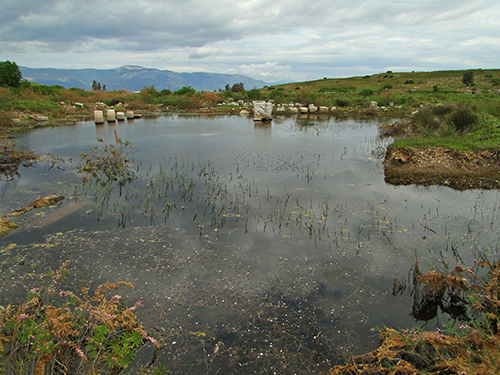
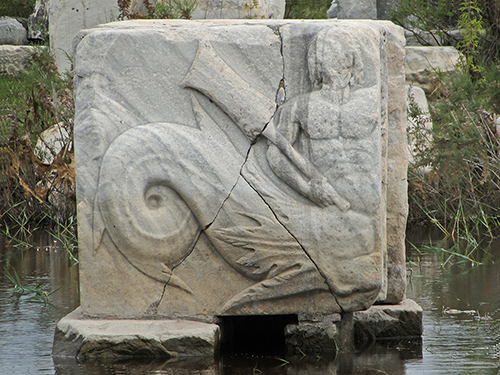
Miletus Lion. However, Jerry also wanted to locate one other famous archeological remain related to the ancient harbor at Miletus—the sole surviving Harbor Lion statue, one of two lion figures that stood guard over the entrance to the Miletus harbor. We started surveying the site for the lion. Jerry knew the lion would not be perched up on a pedestal easy to spot across the fields, because the entire site is submerged as part of a giant bog these days. So, how were we going to have any chance to find the Harbor Lion of Miletus?
As we were pondering our predicament, a wizened old shepherd of small stature must have caught sight of us before we caught sight of him. This shepherd somewhat catches us off guard because he already is hurrying toward us when we finally catch sight of him. He seems to be motioning for us to follow him, so we did. Wow! This little guy walks fast! Jerry was having a hard time keeping up, and I began to lag further and further behind. Jerry later said that he began to get worried about the distance beginning to separate us, but he felt like as long as he could kept me in his line of sight he would keep following the shepherd, who was moving at a furious pace. (We later figured two reasons why he was moving so fast. One reason was the lion was a long way away from where we were, which we did not know at the time. The other reason was he had had to leave his flock behind to come help us, and the good shepherd was not going to leave his flock for long.) We had no clue where he was taking us. He spoke no English, and we spoke no Turkish language. Yet, having only seen us at a distance, he seemed to divine our need immediately and came to help us post haste.
Miletus Shepherd. In some areas, you move around simply by walking the ridge of an embankment, almost like a levee system. Our Miletus shepherd led us down the ridge of one of these levees straight to the lone remaining lion figure that had stood at the old harbor entrance. We never would have found that lion, one, because his shape was almost unrecognizable, worn and rounded after so many centuries unprotected from the elements, and, two, because he was almost totally immersed in the swampy water.

After getting us to the spot he knew we were looking for, the shepherd pulled out of his worn and tattered overcoat a crumpled cache of old pictures. They were pictures he had accumulated over the years of himself with others he had shown around the harbor area of the Miletus site. He’s a cute little man. I took a picture of Jerry and him, and we gave him some Turkish lira for his trouble. He bid ado and headed on his way back to his sheep.
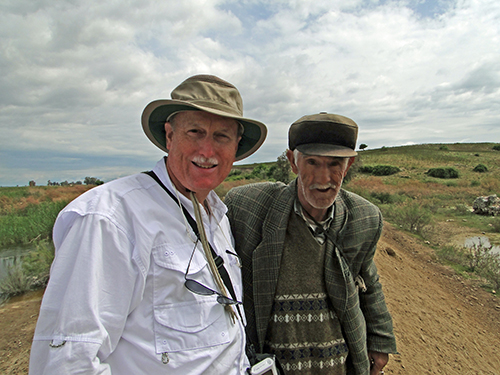
Occasionally we could hear his sheep bleating as they paused from their grazing to look up anxiously, not seeing his familiar figure nearby. He would call out to them with a very distinctive tone and pitch, and, even though the shepherd was far away, the moment the sheep heard his voice, they calmly went back to their grazing, reassured once again all was well—“My sheep hear my voice. I know them, and they follow me” (John 10:27). Jerry already was conjuring devotional thoughts based on this wonderful experience. The Miletus shepherd: he knows your need; he knows the way; he leads you there; he makes your day.
Miletus Museum? The journey back to the theater area where we started is a long hike. We finally get back and retrieve our car from the parking area. As we are leaving the Miletus site, we pass by a new building. We stop to find out that this new facility is supposed to house a new Miletus museum. Jerry sees some personnel on the premises, apparently guarding the area, and inquires when the museum will open. One of the attendants understands a little English and responds that the museum should be opening in the fall. Hurray! Another museum to visit—but that visit has to await another trip to Turkey and another journal.
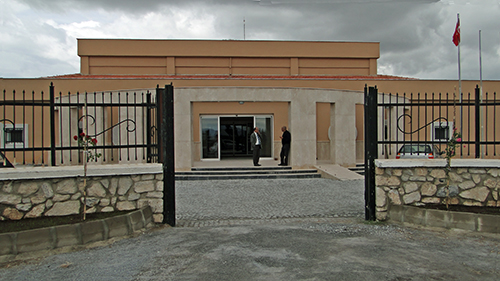
Priene. Now, we’re off to our third and final goal of this long day: the classical site of Priene. We are able to find the site without too much trouble at all. Priene is in the same large valley area as Miletus but right on the ridge of a mountain range. However, getting up to the site is another story altogether. Priene is most unusual, as the site is located pretty far up a steep mountainside from the valley floor. Though the hike up the steep mountainside from the parking area is quite a climb, after several rest stops to give me a breather with my blood pressure problems, we finally arrive. Once up to the top, the hill levels out and getting around the site is actually easy. We visit the small theater that seats around 6500. The theater seating is in very good condition. From the top of the mountainside above the theater, the view of the valley is awesome. Jerry wondered if Miletus were visible down the valley to our right, if he knew exactly where to look, but he was not sure. In any case, this “city on a hill” provides a breathtaking and beautiful view of the vast expanse of the Meander Valley below.
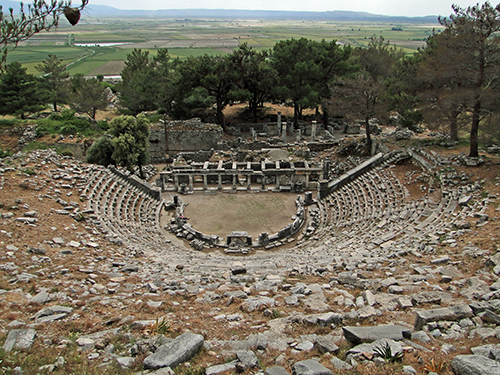
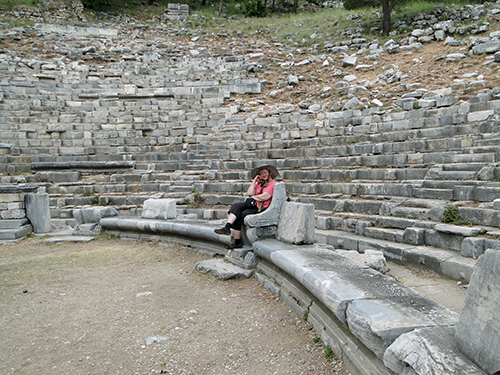
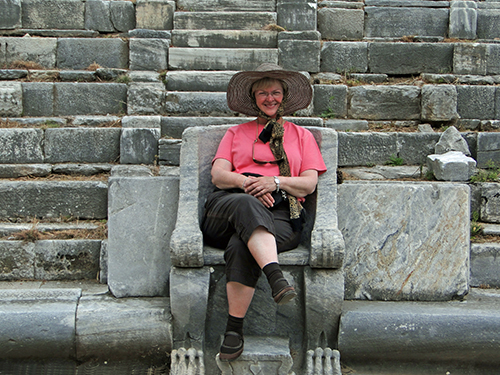
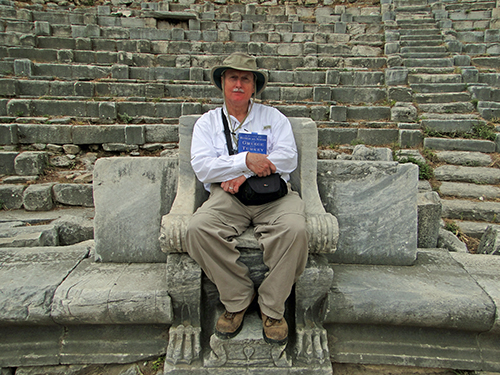
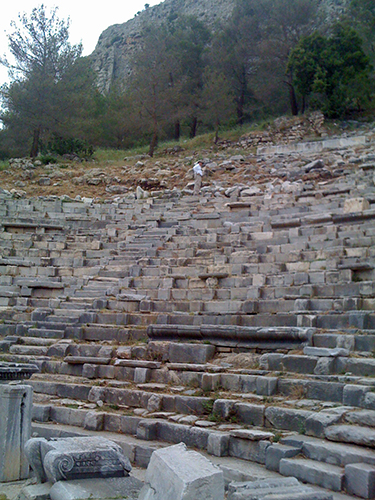
All ancient theaters had an altar to Dionysius. Before special plays and commemorative events, sacrifices were conducted. The name of Dionysius is recognizable in the last line of the inscription on the side of the theater altar at Priene.
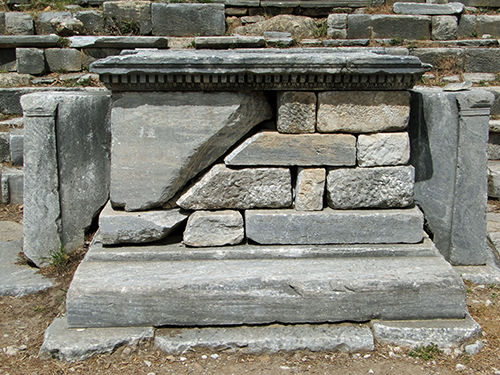
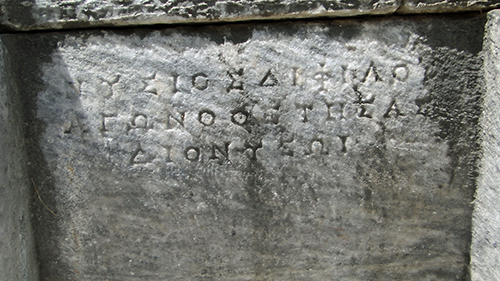
Other sights to view are the Athena temple, an agora, and other features typical of an ancient city. The Athena temple is situated dramatically on the hillside because the sanctuary was perched right at the foot of the acropolis, whose sheer walls create quite the stunning backdrop for the temple.
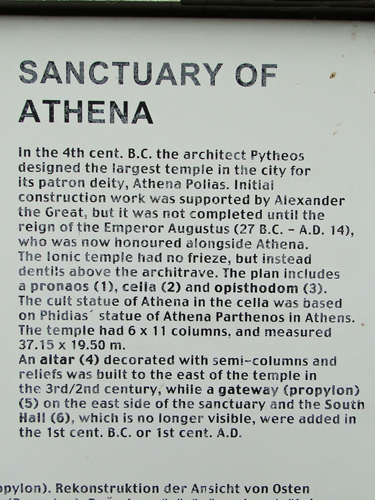
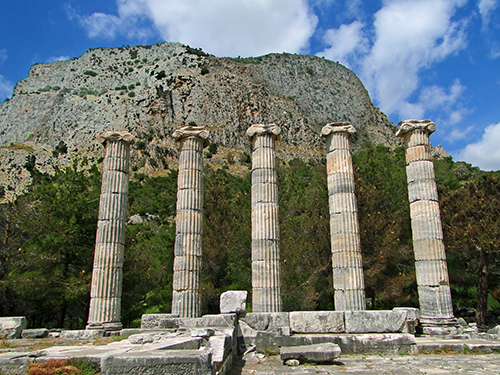
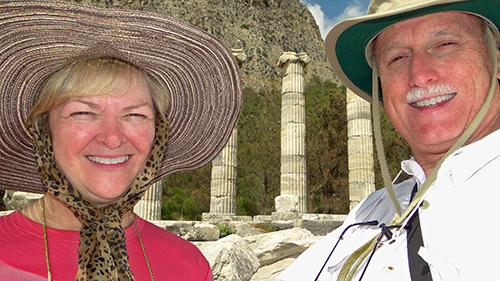
As we are getting ready to leave the site of Priene, we discovered an interesting water “junction” with clay pipes going out in five different directions. The design of a city’s water system was one of the great engineering feats of the Roman world. Unfortunately, the day now is getting long, and we still have to drive back to Selçuk, so we finally have to leave.
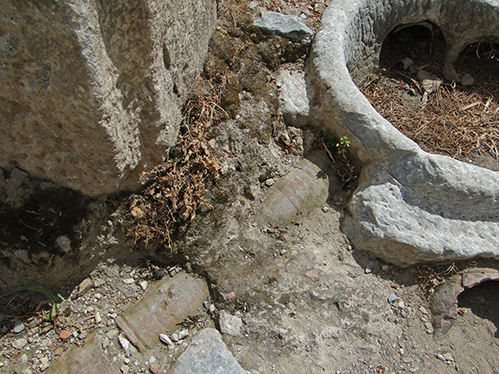
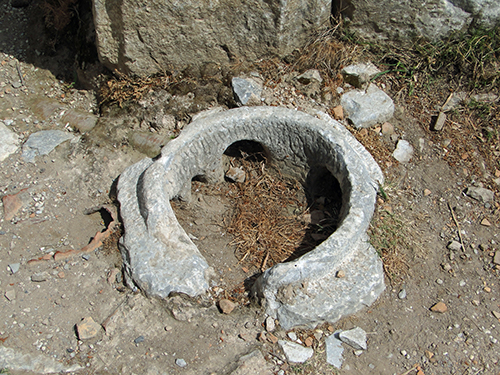
Amazon Bistro. We did it! We visited three ancient sites in one day! We headed back to Selçuk. Finally back at our hotel, we take time first to record our pics into the database I am keeping. This database is the premier tool Jerry will use to catalog what images he has and what illustrations they provide and to incorporate those pictures into his classroom lectures. So, the first task at any point in the day and at the end of the day is to keep this database updated. After concluding the database task, we finally can relax. We decide to go to dinner at the Amazon Bistro again, that restaurant near our hotel where we ate the first night and had that wonderful Greek salad. Of course, Jerry had Greek salad again.
Background Music. While we’re eating, a CD is playing tracks for background music. Jerry is quite taken by one particular song beautifully arranged with a gentle tango feel and Greek lyrics. After we eat, Jerry asked our waiter, who also was the proprietor of the establishment, the name of the song. The waiter pulled the CD out of the player, and we can see that the CD has no names—the compilation is homemade. The restaurant owner, however, insisted on giving the entire CD to Jerry. The Turks are very giving. Jerry was somewhat embarrassed. He had planned to find the song on iTunes or somewhere. You almost hate to say you like something, because your Turkish hosts will try to give it to you.
Back in the States Jerry later discovered the song was entitled To Tango Tis Nefelis, performed by the Greek female vocalist, Haris Alexiou. The translation of the lyrics is a little weird, Jerry says, but he still loves the song. Here is a YouTube music video of Haris Alexiou’s arrangement that had struck Jerry in the restaurant at Selçuk.
Perpetual Photographer. On the way out of the bistro, Jerry asked for my iPhone, and at first I did not know why. Then I saw what he saw, the sun setting gloriously over the Artemesian complex of Ephesus, and I realized Jerry had left his camera back at the hotel. I also remembered that the rain that the early morning had threatened never came the entire day. Hooray for my photographer! The day’s ambitious goals fully met, the bistro’s background music in our hands, and the sun’s beautiful goodbye on our minds, we enjoyed the casual stroll back to the hotel.
For a video of the Didyma, Miletus, and Priene action today:
